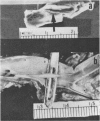Abstract
Severe catheter-related thromboatheromatous lesions were found at necropsy in 33 of 56 infants who had umbilical arterial catheters passed during life. In infants dying within 8 days of insertion of the catheter, varying degrees of thrombosis of the aorta and its major branches were seen. With increasing thrombosis and aging of the thrombus, fatty deposits were seen first within the thrombus, and then in the intima and media. In addition there was evidence of proliferation of medial smooth muscle cells and of disruption of the medial architecture below the thrombus, characterized by the presence of abundant mucopolysaccharide. In infants who survived longer, varying degrees of organization of the thrombus could be traced, leading eventually to raised fibrous plaques with lipid and occasionally calcification. The lesions in the older infants were similar in many respects to experimental thromboatheromatous lesions produced in rabbits, and to some lesions of artheroma occurring spontaneously in humans. A wide variety of embolic phenomena were found, with features suggesting asynchrony of embolic episodes. The presence of thrombotic lesions could not be related to birthweight, Apgar scores at 1 and 5 minutes, age at catheterization, duration of catheterization, underlying disease process, age at death or the presence of hypothermia, acidosis, or anomalies in coagulation tests. There is a need for less hazardous methods of monitoring arterial oxygen tension.
Full text
PDF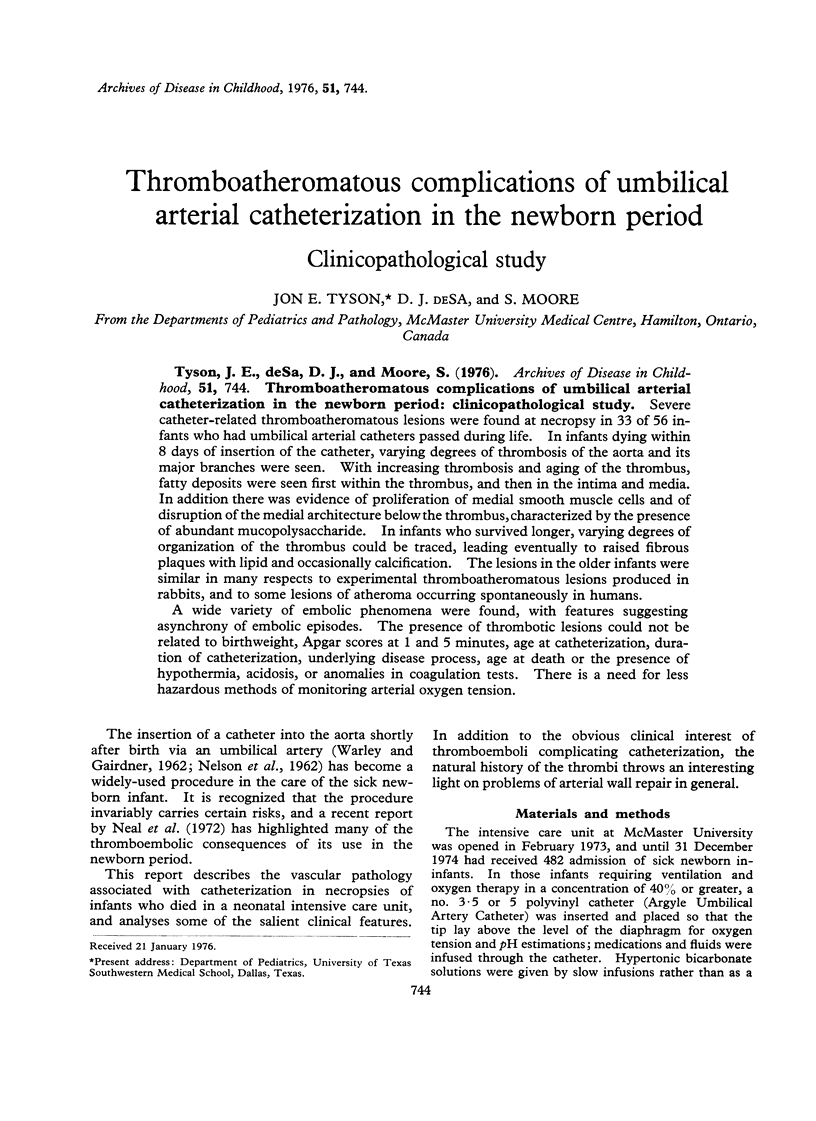
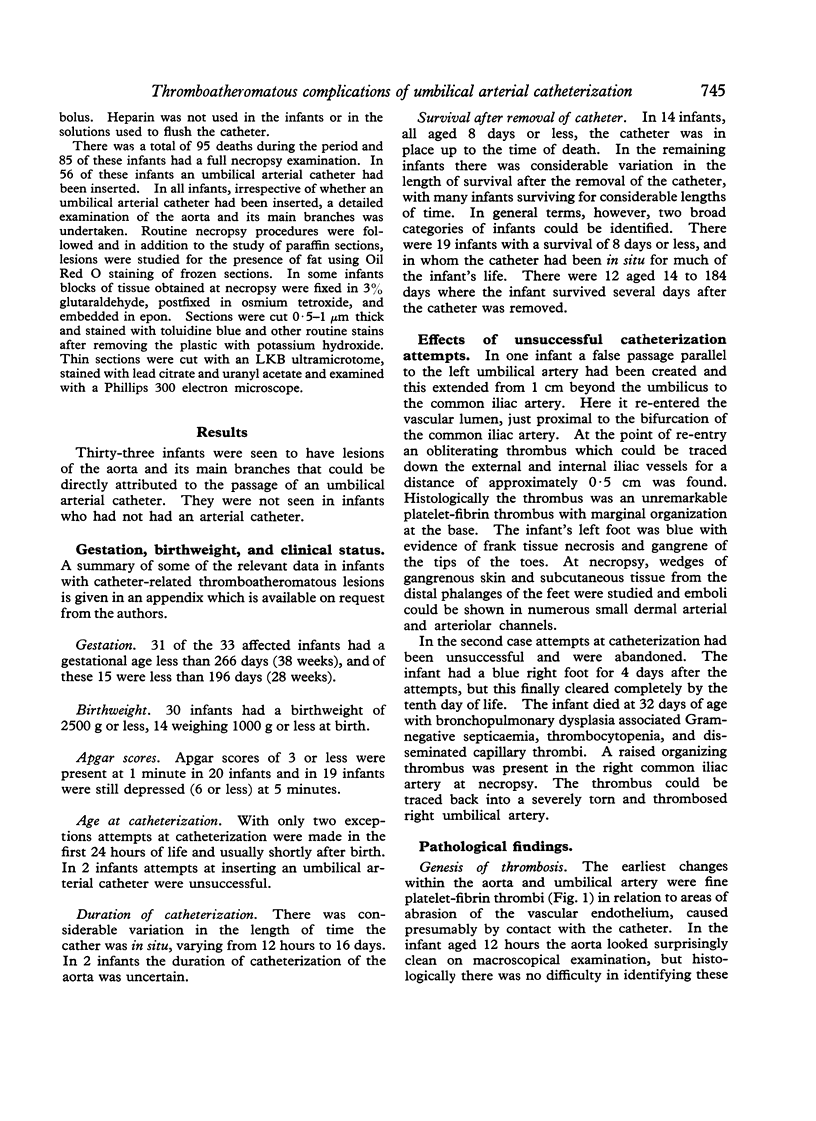
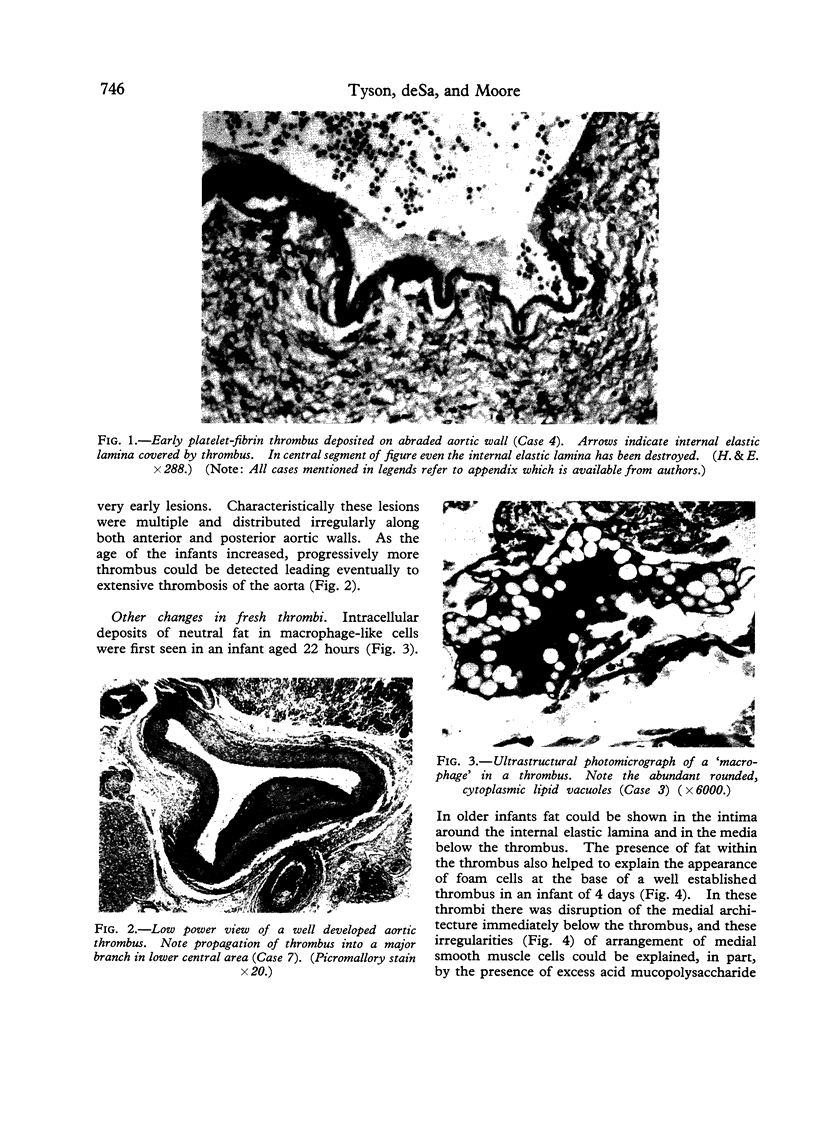
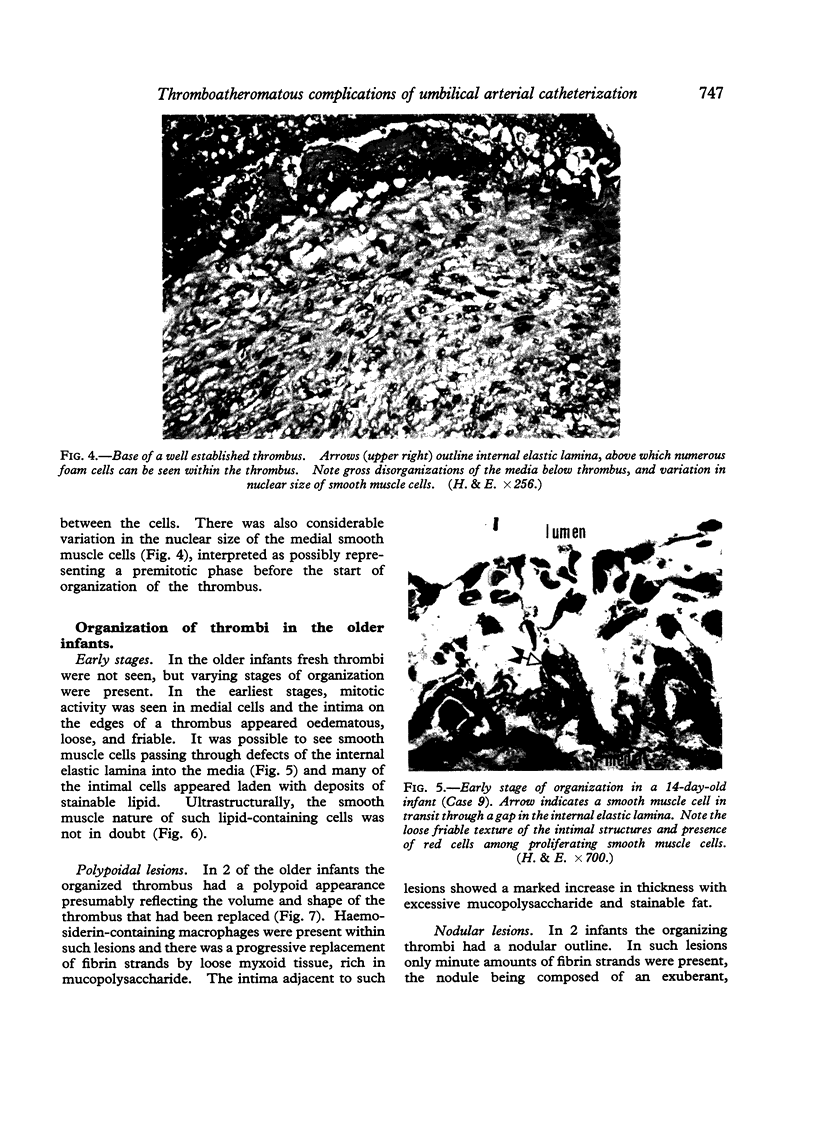

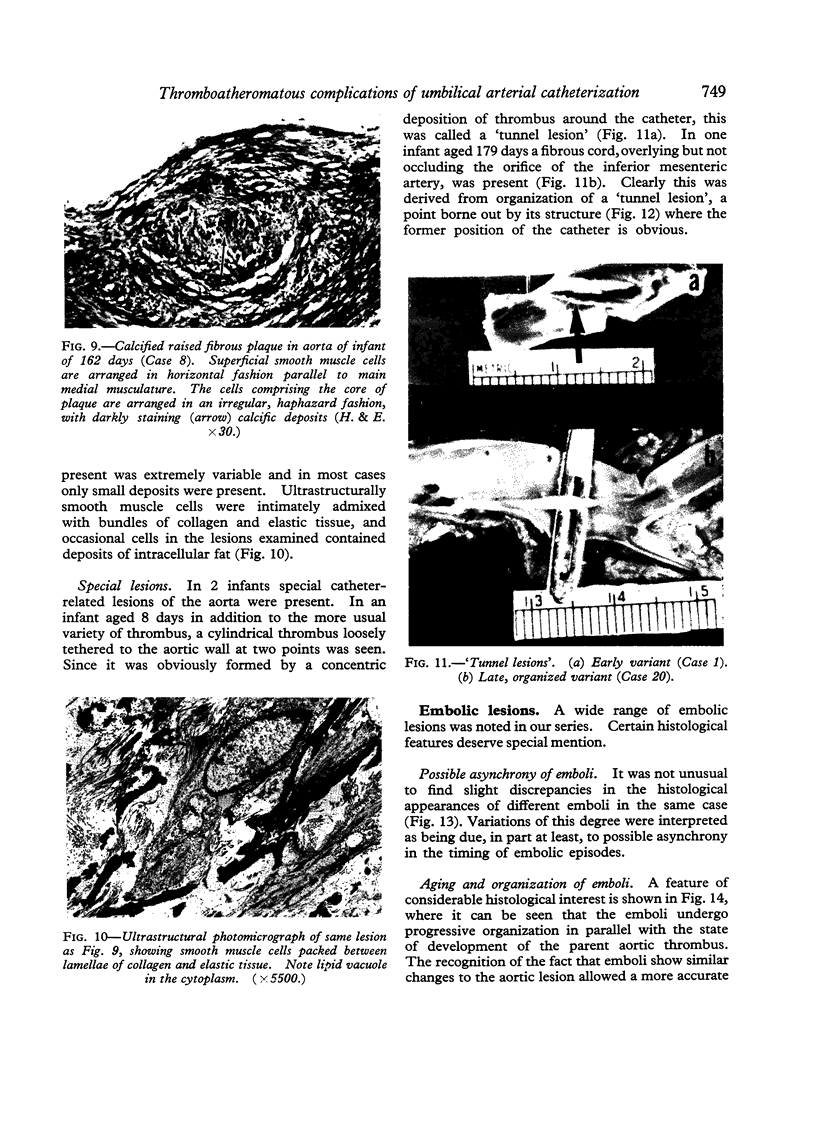
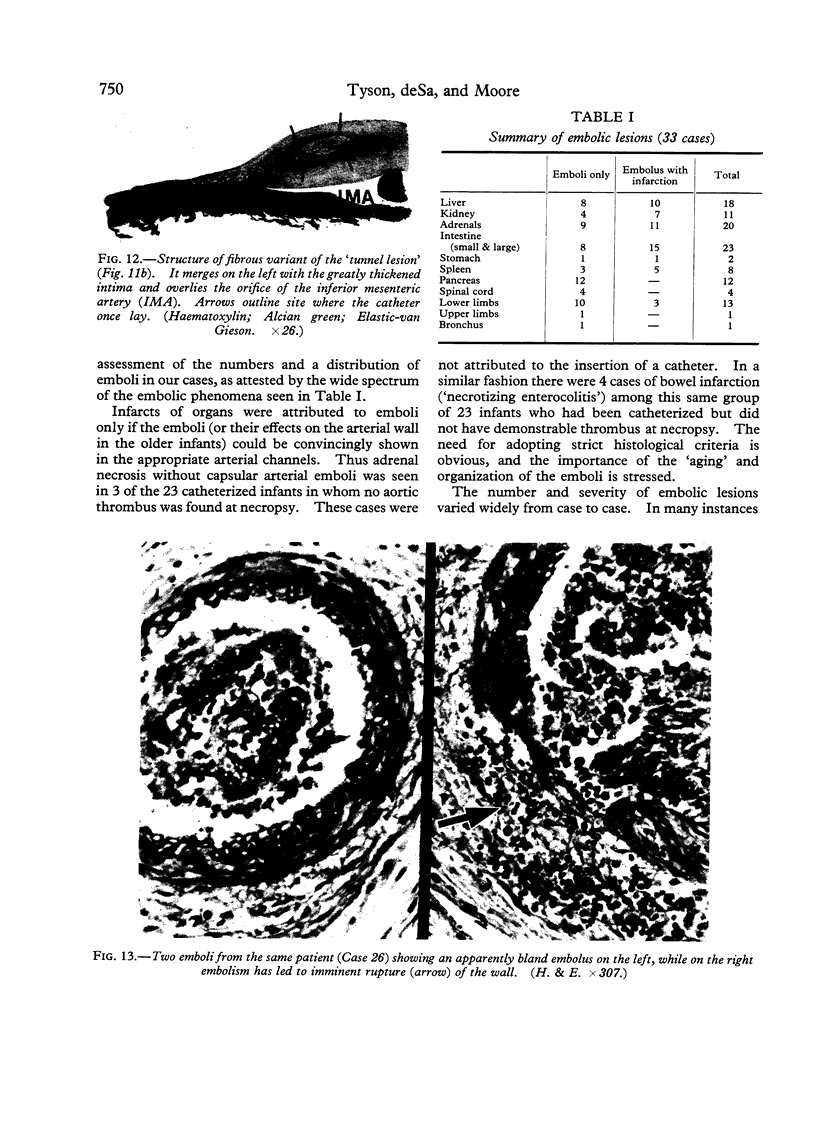
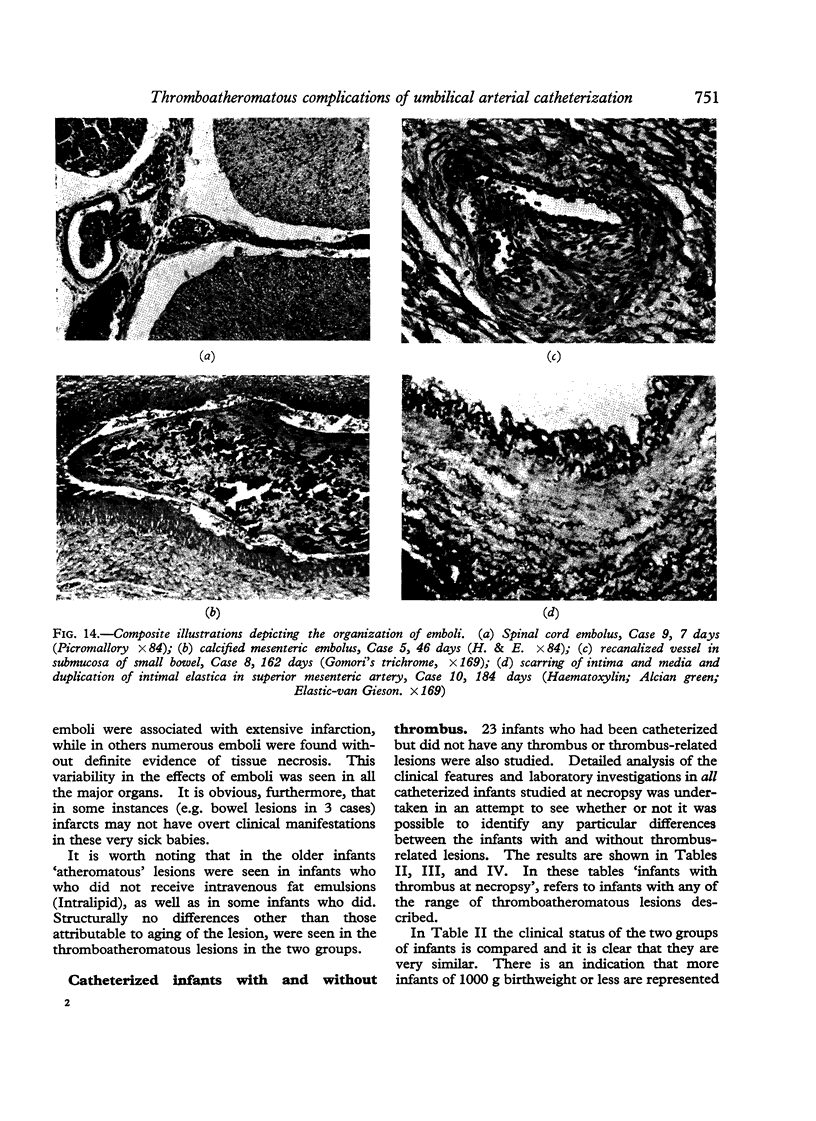
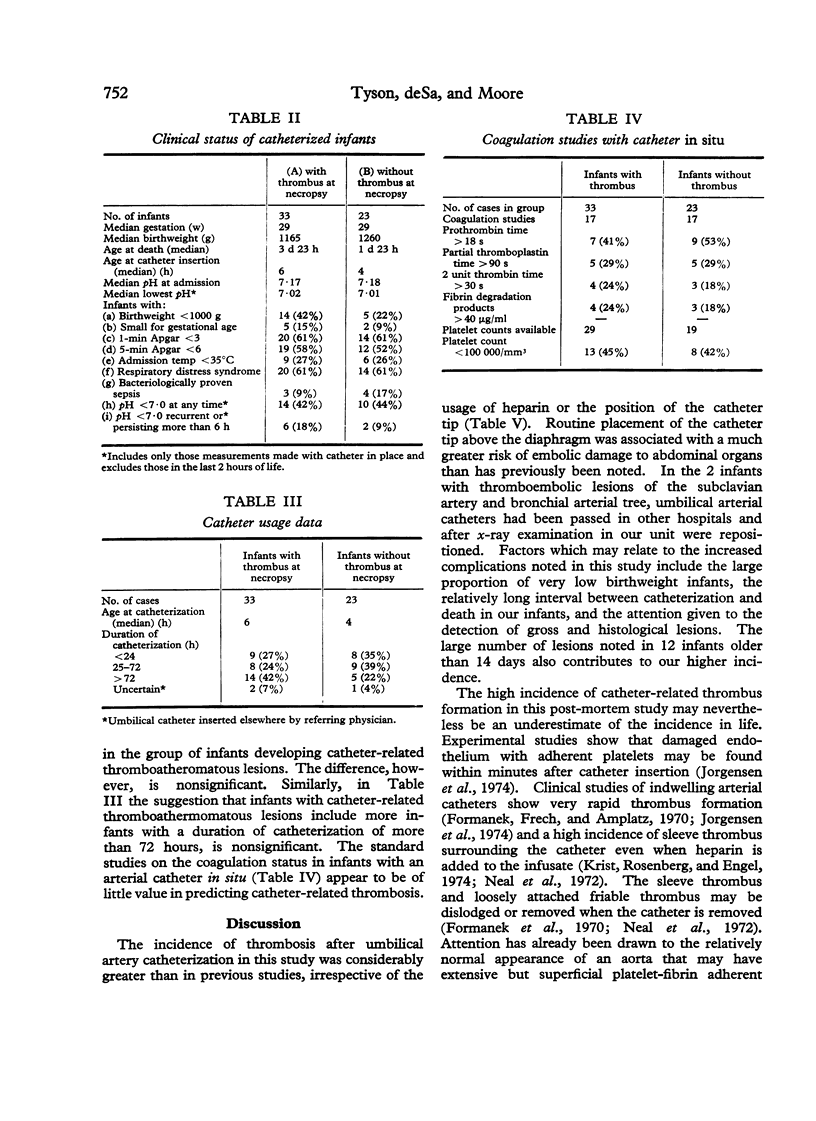
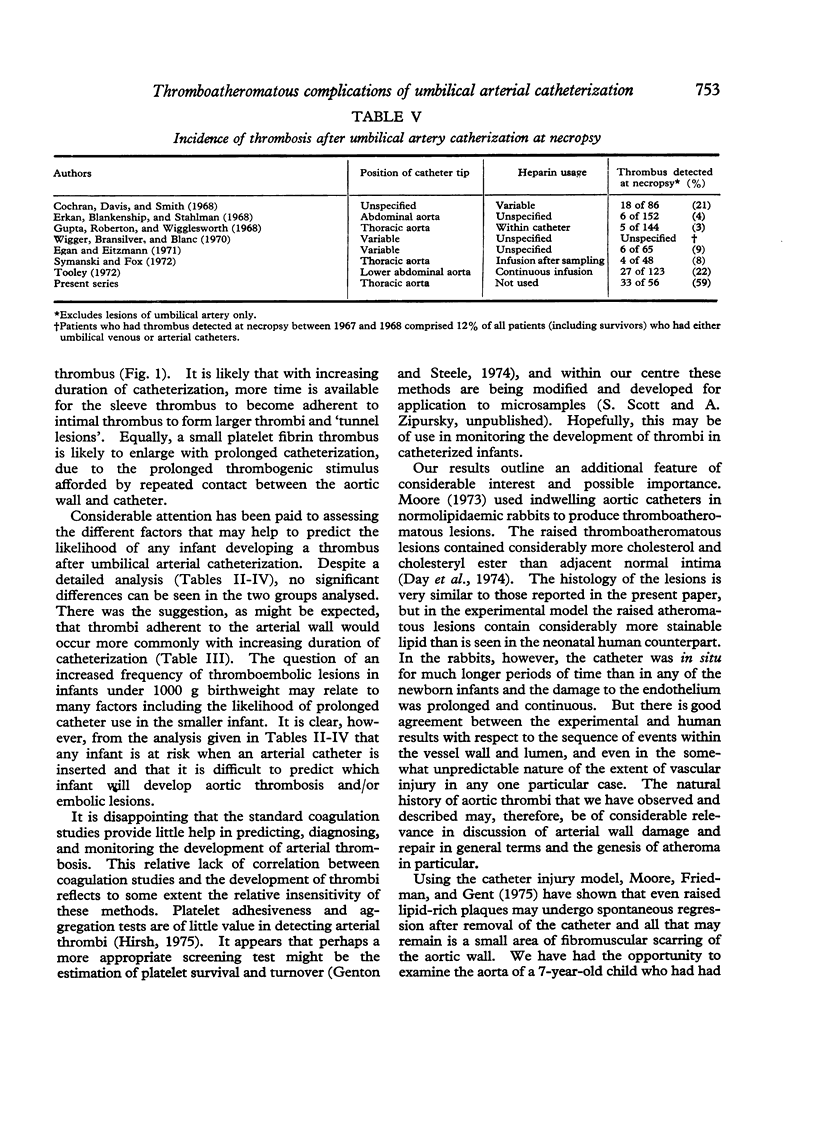
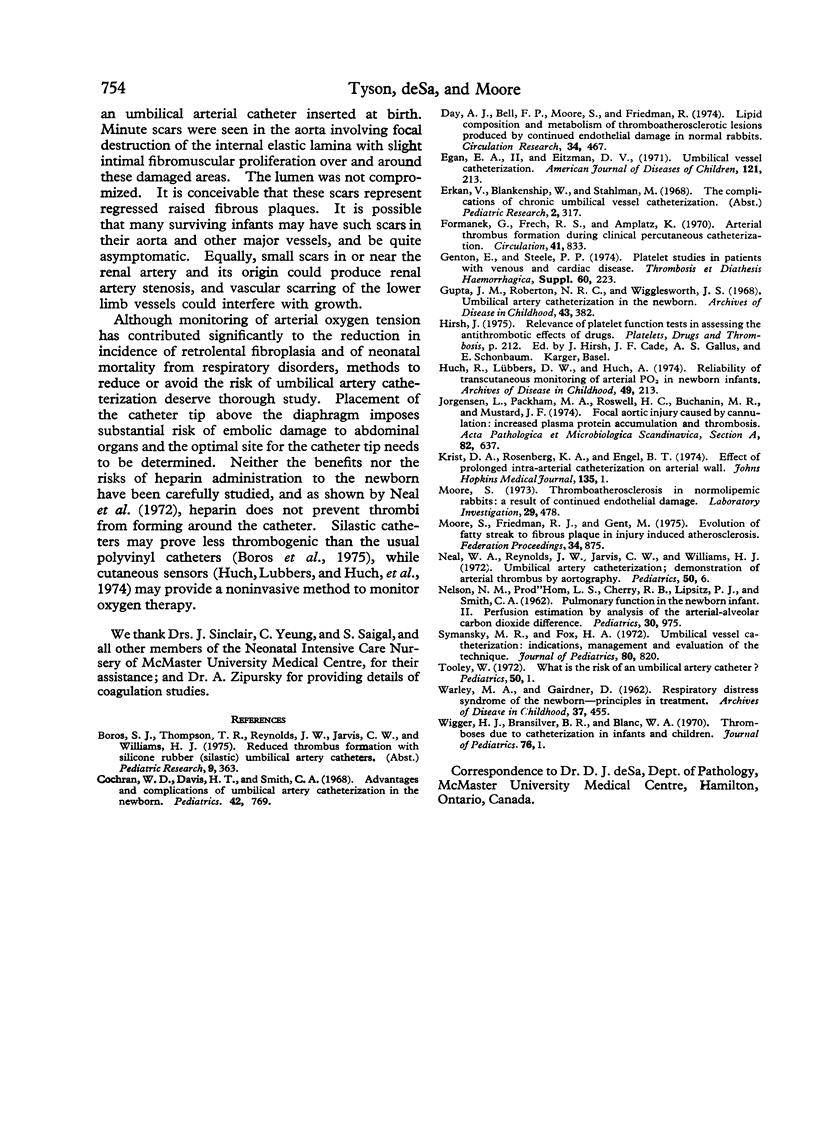
Images in this article
Selected References
These references are in PubMed. This may not be the complete list of references from this article.
- Cochran W. D., Davis H. T., Smith C. A. Advantages and complications of umbilical artery catheterization in the newborn. Pediatrics. 1968 Nov;42(5):769–777. [PubMed] [Google Scholar]
- Day A. J., Bell F. P., Moore S., Friedman R. Lipid composition and metabolism of thromboatherosclerotic lesions produced by continued endothelial damage in normal rabbits. Circ Res. 1974 Apr;34(4):467–476. doi: 10.1161/01.res.34.4.467. [DOI] [PubMed] [Google Scholar]
- Egan E. A., 2nd, Eitzman D. V. Umbilical vessel catheterization. Am J Dis Child. 1971 Mar;121(3):213–218. doi: 10.1001/archpedi.1971.02100140079005. [DOI] [PubMed] [Google Scholar]
- Formanek G., Frech R. S., Amplatz K. Arterial thrombus formation during clinical percutaneous catheterization. Circulation. 1970 May;41(5):833–839. doi: 10.1161/01.cir.41.5.833. [DOI] [PubMed] [Google Scholar]
- Gupta J. M., Roberton N. R., Wigglesworth J. S. Umbilical artery catheterization in the newborn. Arch Dis Child. 1968 Jun;43(229):382–387. doi: 10.1136/adc.43.229.382. [DOI] [PMC free article] [PubMed] [Google Scholar]
- Huch R., Lübbers W., Huch A. Reliability of transcutaneous monitoring of arterial PO2 in newborn infants. Arch Dis Child. 1974 Mar;49(3):213–218. doi: 10.1136/adc.49.3.213. [DOI] [PMC free article] [PubMed] [Google Scholar]
- Jorgensen L., Packham M. A., Rowsell H. C., Buchanan M. R., Mustard J. F. Focal aortic injury caused by cannulation: increased plasma protein accumulation and thrombosis. Acta Pathol Microbiol Scand A. 1974 Sep;82(5):637–647. doi: 10.1111/j.1699-0463.1974.tb03588.x. [DOI] [PubMed] [Google Scholar]
- Kristt D. A., Rosenberg K. A., Engel B. T. Effect of prolonged intra-arterial catheterization on arterial wall. Johns Hopkins Med J. 1974 Jul;135(1):1–8. [PubMed] [Google Scholar]
- Moore S. Thromboatherosclerosis in normolipemic rabbits. A result of continued endothelial damage. Lab Invest. 1973 Nov;29(5):478–487. [PubMed] [Google Scholar]
- NELSON N. M., PROD'HOM L. S., CHERRY R. B., LIPSITZ P. J., SMITH C. A. Pulmonary function in the newborn infant. II. Perfusion--estimation by analysis of the arterial-alveolar carbon dioxide difference. Pediatrics. 1962 Dec;30:975–989. [PubMed] [Google Scholar]
- Neal W. A., Reynolds J. W., Jarvis C. W., Williams H. J. Umbilical artery catheterization: demonstration of arterial thrombosis by aortography. Pediatrics. 1972 Jul;50(1):6–13. [PubMed] [Google Scholar]
- Symansky M. R., Fox H. A. Umbilical vessel catheterization: indications, management, and evaluation of the technique. J Pediatr. 1972 May;80(5):820–826. doi: 10.1016/s0022-3476(72)80137-9. [DOI] [PubMed] [Google Scholar]
- Tooley W. H. What is the risk of an umbilical artery catheter? Pediatrics. 1972 Jul;50(1):1–2. [PubMed] [Google Scholar]
- WARLEY M. A., GAIRDNER D. Respiratory distress syndrome of the newborn--principles in treatment. Arch Dis Child. 1962 Oct;37:455–465. doi: 10.1136/adc.37.195.455. [DOI] [PMC free article] [PubMed] [Google Scholar]
- Wigger H. J., Bransilver B. R., Blanc W. A. Thromboses due to catheterization in infants and children. J Pediatr. 1970 Jan;76(1):1–11. doi: 10.1016/s0022-3476(70)80123-8. [DOI] [PubMed] [Google Scholar]












